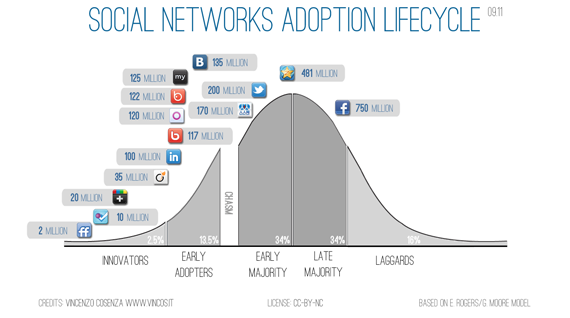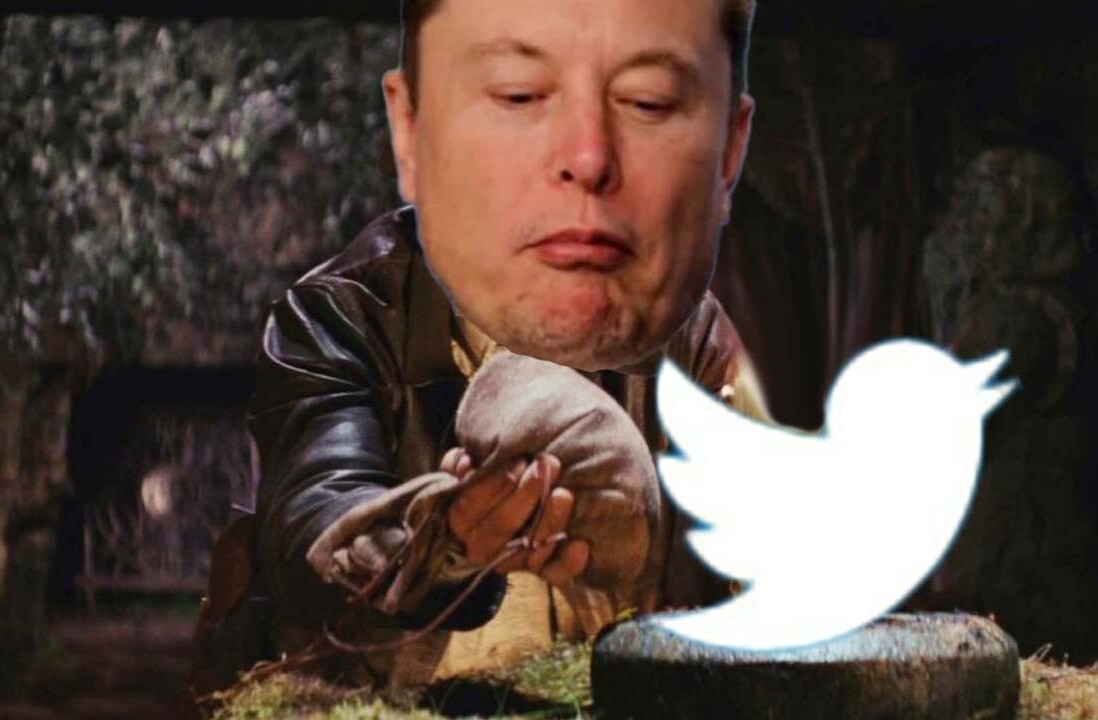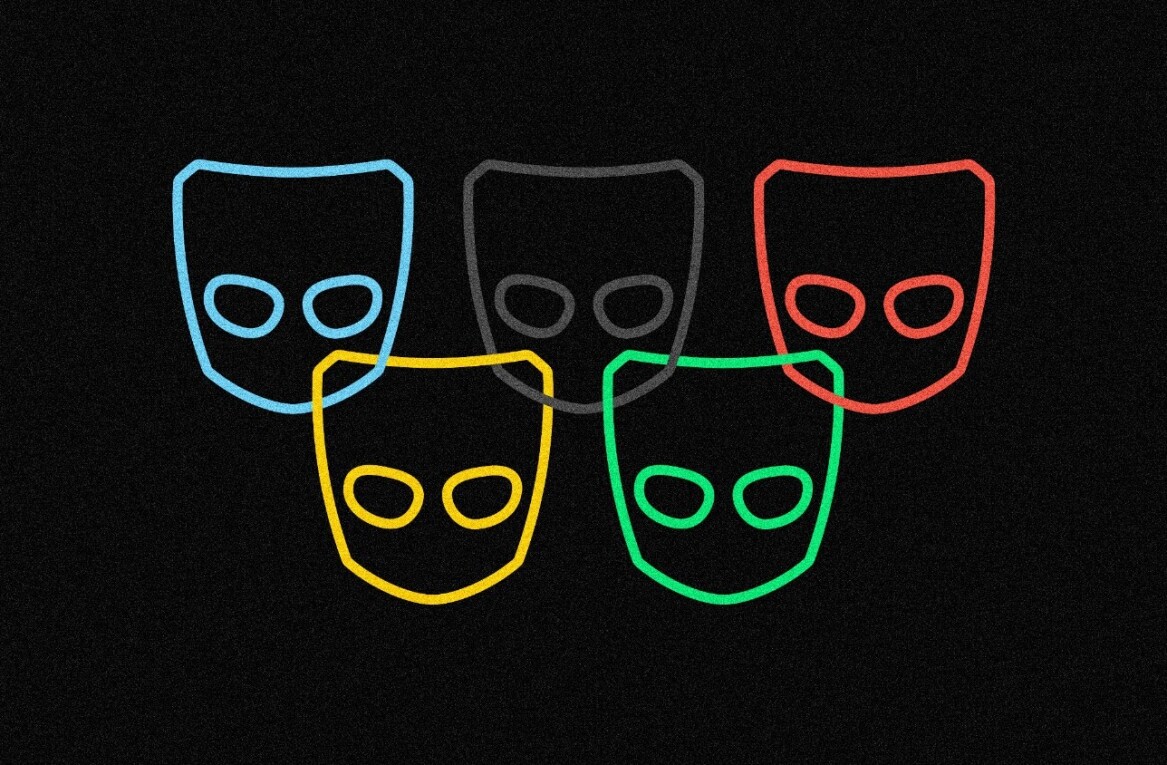![The Adoption Lifecycle of Social Networks [Infographic]](https://img-cdn.tnwcdn.com/image?fit=1280%2C720&url=https%3A%2F%2Fcdn0.tnwcdn.com%2Fwp-content%2Fblogs.dir%2F1%2Ffiles%2F2011%2F08%2Fdaisies-10331.jpg&signature=2a8fe4c77554f5a40a5dd2a3461a5a32)
Vincenzo Cosenza, an Italian digital strategist, has just finished his latest research on Social Networks Adoption Lifecycle. Cosenza has applied the Innovation Adoption Model, a model that shows the stages in the adoption process for a new product by a consumer, to social networks diffusion to plot their actual state and, hopefully, understand their future trajectories. He made a very cool infographic and gave us the first look.
In the innovators area you’ll Friendfeed, which unfortunately stopped innovating after its acquisition by Facebook; Foursquare, the most famous location based social network with 10 million users; and Google+ with its explosive adoption rate (20 million users in 3 weeks).
In the early adoption stage we find professional social networks like Viadeo and LinkedIn, or generalist ones like Orkut (owned by Google), VKontakte (leader in Russian territories), Bebo. Badoo is the only service specifically designed for dating purposes. MySpace, after reaching the early majority is now struggling for conquering a niche (it fell from 225 million users to 125 million because of several management mistakes and Facebook’s rise).
RenRen, the most important Chinese real-name SNS, and Twitter were able to successfully cross the chasm and reach the early majority. Meanwhile QZone, China’s largest nickname network built on the back of Tencent’s QQ Messenger, is entering the late majority area.
Lastly, Facebook the social network that has conquered the masses seems determined to hit the one billion users mark.
The large majority of the social networks listed have been running for at least two years. If Google+ has its way, having existed for only a month, it’s likely to be the social network with the fastest trajectory through the adoption lifecycle. One question remains; what happens when a social network reaches laggards stage? We’ve seen it once with MySpace, will we see it happen again with Facebook? As we’ve already discussed… there isn’t a perfect social network.
Get the TNW newsletter
Get the most important tech news in your inbox each week.





